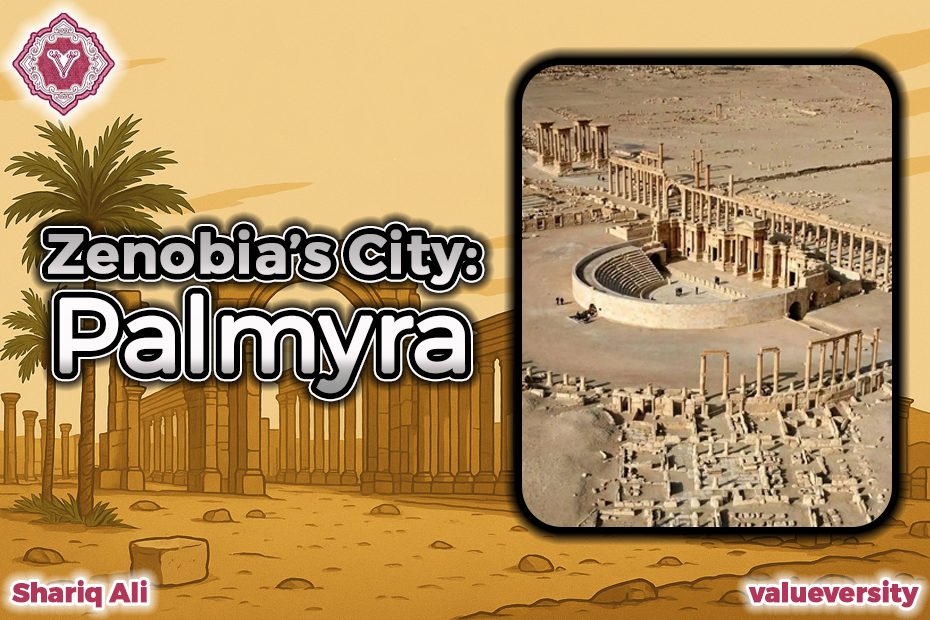Zenobia’s City: Palmyra
Shariq Ali
Valueversity
Approximately 215 kilometers northeast of Damascus, in Syria’s desolate and golden desert, an oasis with its towering date palms glistens on the pages of history. Thanks to underground springs, this place not only became a symbol of life in the desert but also transformed into a global highway connecting civilizations.
Rows of date palms gradually gave way to rows of towering columns. Caravans after caravans began arriving here to refill water, rest, and exchange goods between the East and the West. This temporary resting place slowly evolved into a densely populated and dignified city. That city was Palmyra — known in Arabic as Tadmor.
Palmyra was situated on a key trade route between the Mediterranean Sea and the Euphrates River. The Romans named it Palmyra, meaning “City of Palms.” Its markets, magnificent temples, and beautiful streets gradually became a reflection of a grand civilization.
This was the place where Greek, Roman, and Eastern architectural elements blended together to create a unique aesthetic expression. The Monumental Arch, the Temple of Bel, the Temple of Baalshamin, and the grand stone-carved theatre still bear witness to the glory of that civilization.
In the third century AD, the city’s destiny took a new turn — when Queen Zenobia, through her wisdom, courage, and graceful leadership, turned Palmyra into an independent empire. She not only challenged the might of Rome but raised her flag of conquest as far as Egypt and Anatolia. Although she was eventually defeated by the Roman Emperor Aurelian, Zenobia’s dignity became immortal in the annals of history.
Palmyra was not just a heap of bricks and stones, but a grand cultural crossroads. Aramaic and Greek were spoken here. Its sculpture, fine arts, and the inscriptions on tombs stand as living proof of its cultural richness. This city, which once served as a bridge between East and West, still narrates the tale of human evolution.
Unfortunately, in 2015, extremists destroyed many of the city’s great monuments, including the Temple of Bel and the famous arch. Yet, the spirit of Palmyra lives on — in its ruins, in our memories, and on the pages of history.
Palmyra teaches us that knowledge, culture, and intercultural connections are humanity’s greatest strengths. The heritage of the past is not just a relic, but a vital part of our identity.
